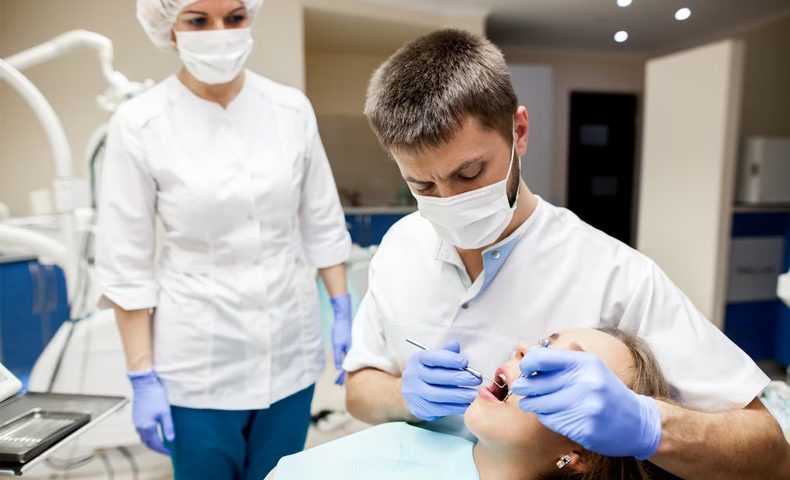
A crossbite is a common dental condition affecting children and adults alike. It occurs when one or more teeth are not correctly aligned, causing the upper and lower teeth to meet improperly.
This misalignment often results in teeth positioned too closely to the cheek or tongue, disrupting their natural fit. For families in Aurora, addressing dental concerns like crossbite early is crucial, making a family dentist in Aurora your best ally for professional advice and treatment.
What is a crossbite?
Crossbites are divided based on where the misalignment occurs:
- Anterior Crossbite: The front teeth are misaligned.
- Posterior Crossbite: The back teeth show improper alignment.
If untreated, a crossbite can lead to challenges with biting and chewing, ultimately affecting oral health and overall well-being.
What Are Crossbite Symptoms?
The most noticeable symptom is teeth that don’t align properly. The severity of the misalignment varies, ranging from a single tooth to several teeth being out of place. If left uncorrected, crossbite can cause:
- Tooth wear and enamel breakdown
- Receding gums and cavities
- Jaw pain and uneven growth
- Temporomandibular joint disorders (TMD)
- Facial asymmetry
Early diagnosis and intervention can prevent these complications and restore a healthy smile.
Effects Of Crossbite
Living with a crossbite can significantly impact your dental health and quality of life. Here are the most common effects:
1) Headaches and Jaw Pain
Misaligned teeth strain jaw muscles, leading to intense facial pain and headaches. The ache may spread to the neck and shoulders, affecting daily comfort.
2) Tooth Decay
Uneven teeth are more difficult to clean, raising the risk of plaque buildup and tooth erosion. Left untreated, this can result in unbearable pits and tooth loss.
3) Painful Bites
A crossbite can make biting into hard foods difficult and painful, limiting your ability to enjoy certain meals. Orthodontic intervention can alleviate this discomfort and restore function.
Treatments for Crossbite
Crossbites don’t resolve independently, making early treatment essential to prevent jaw and dental complications. Addressing the issue during childhood, while the jaw and facial bones are still developing, offers the best outcomes. However, adults can also undergo effective treatment for crossbites.
If your child has a crossbite, an orthodontist may recommend waiting until they are around 7 or 8 years old to start treatment. The specific process will depend on the reason and severity of the condition. Common treatments include:
- Palatal Expander: A gadget attached to the upper teeth that rests against the roof of the mouth. It is adjusted periodically to widen the upper jaw and correct alignment gradually.
- Braces: Traditional braces apply pressure to the teeth and bones, moving them into the correct position. For optimal results, braces are sometimes used alongside a palatal expander.
- Removable Appliances: Orthodontists may use a spring-equipped appliance to shift the tooth forward for mild cases, such as an upper front tooth behind a bottom tooth. This method is particularly effective for children with growing jaws.
- Clear Aligners: These removable, transparent braces are a discreet option for treating some types of crossbite, offering both comfort and convenience.
In addition to these treatments, correcting harmful habits can be an important part of crossbite management:
- Fixed Palatal Crib: This appliance is designed to stop thumb or finger-sucking habits contributing to misalignment. It’s often used when other approaches fail, especially in children aged 2–4.
- Myofunctional Therapy: This therapy helps retrain how you chew and swallow, ensuring the tongue doesn’t push teeth out of place. It also encourages nasal breathing over mouth breathing, complementing other treatments.
By consulting with a skilled orthodontist, you can determine the most suitable solution to correct a crossbite and promote a healthier, more aligned smile.
Conclusion
Crossbite is a treatable dental condition, and early intervention ensures better results. Whether it’s through braces, aligners, or therapy, your orthodontist will recommend the best course of action tailored to your needs.
Consulting a trusted family dentist in Aurora will set you on the right path to healthier, perfectly aligned teeth. Take the foremost step towards a confident smile today!
